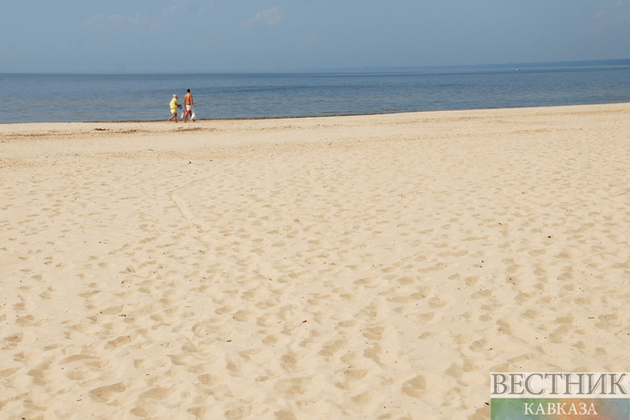Last weekend, Italy's Lampedusa island was again making headlines for being overrun with migrants. But paradoxically, the crisis was more visible from TV news bulletins and social media than from the ground. Lampedusa, a 20-square-kilometres rocky outpost that is closer to North Africa than to the rest of Italy, is Europe's southernmost territory, and has long been a flashpoint of the continent's migration crisis.
According to EUobserver, on July 8, former mayor Giusi Nicolini gave a reminder of this reality as she posted pictures and a video on social media revealing grim living conditions at the fenced-off hotspot camp where migrants are held upon arriving on the island. "There are 2,100 people amassed in the Lampedusa reception centre. Even women (4 are pregnant), children, the sick and in need of care sleep on the floor, where they also eat, among the garbage. The beds are fewer than 200," Nicolini wrote. "These could be pictures of Libya. But no, it's Italy," she added.
Her expose hit a raw nerve, prompting reactions from politicians of all colours, government pledges to fix the problem, and heaps of media coverage. The La Stampa newspaper ran a frontpage article under the headline "Lampedusa hell, a journey into the hotspot of shame." La Stampa sent a reporter on the island, but she could not see the hotspot with her own eyes, as the heavily policed facility is off limits. Like everyone else, she relied on Nicolini's images to describe what was happening inside.
The former mayor told EUobserver she got the footage — showing people sleeping outdoors on foam mattresses, surrounded by plastic bottles, rags and other rubbish — from "guests" of the camp. "For days I had been in contact with some guests, some of whom told me they had been here two months. And then I managed to convince them to give me proof of what they were telling me," she said.
The hotspot is down a dead end country road. On the side of the road, you can find shreds of thermal blankets, until you reach a large gate and a "Frontex" sign. Behind it, your correspondent spotted a line of migrants, presumably awaiting identification. "The centre has double fencing, there is a military presence all around, you cannot even get close to see how the people are doing because they tell you it is a military zone and you cannot get close," NGO worker Marta Bernardini said.
Bernardini, a coordinator for Mediterranean Hope, a Lampedusa-based project by the Federation of Protestant Churches in Italy, explained there used to be a hole in the fence through which migrants could get in and out — a behaviour tolerated in pre-Covid times. With the pandemic, the hole was closed.
Now, there is almost no contact between locals and migrants, who are normally rescued at sea, disembarked on a pier controlled by police, bussed to the hotspot, and bussed again to be put on planes or boats to mainland Sicily. The exception is when migrant boats are not intercepted by the Italian coast guard or customs police and make it all the way to Lampedusa's shores. But migrants are still rounded up and taken to the hotspot. "With this kind of separation, you almost don't see these people, they are more like news from somewhere else: we often say the only migrants that Lampedusans see are on TV bulletins," Bernardini quipped.
Numbers inside the hotspot swelled up last week because regular transfers between Lampedusa and mainland Sicily were suspended due to rough sea weather, while arrivals from North Africa continued.
According to the interior ministry, just under 31,000 sea migrants landed in Italy in the year to date, as of July 12, and about 14,000 came to Lampedusa. Arrivals are up from the same period of 2021, when they totalled about 24,000, but are a far cry from the peaks of 2015-2016.
Lampedusa has been a first landing point for Europe-bound sea migrants for at least three decades, but in 2013 it became notorious for a nighttime shipwreck near its shores which killed 368 people. At the time, it was the deadliest sea accident in recent European history. It triggered worldwide consternation, and pledges of "never again". Since then, more than 24,000 migrants died or went missing in the Mediterranean, according to the IOM.
Flavio Di Giacomo, a spokesman for the IOM, the UN Migration Agency, calls Lampedusa a migration "bottleneck". He says pressure on it could be relieved if there were more maritime search and rescue operations. The idea is that they would intercept people at sea and take them straight to mainland Sicily, avoiding Lampedusa. But Chiara Cardoletti, head of the UN Refugee Agency UNHCR in Italy, is not so sure. The UNHCR has staff on the island, working inside the hotspot.
"You have to be realistic about logistics," Cardoletti told EUobserver. "It's easy to say, 'don't send them to Lampedusa,' if they do it is because it is the closest port, and sometimes it is vital" she noted. "If people have spent days at sea, burnt by the sun or by petrol from their boat … you don't want to leave them at sea for many more hours, especially women and children," she insisted. Between Saturday and Tuesday, Italian authorities worked round the clock to empty the hotspot, using navy vessels, ferries and coast guard units to take people to mainland Sicily. At the end, fewer than 200 people were left in the camp. It is expected to fill up again, as migrant arrivals tend to peak in July and August.
Meanwhile, for most locals or tourists, the evacuation effort was hardly noticeable. The rest of Lampedusa carried on with their summer: with packed beaches and restaurants, and streets dotted with picturesque old Citroen beach cars.






